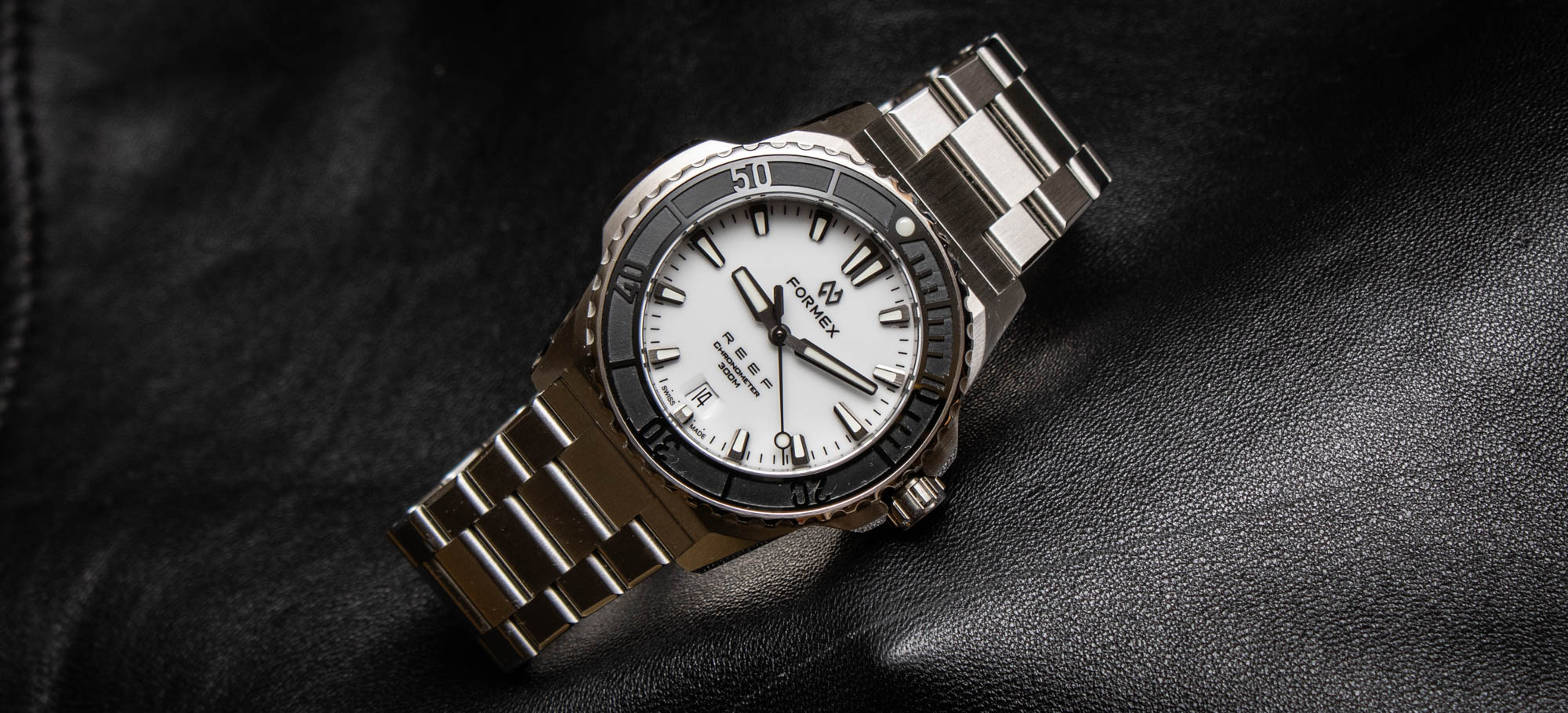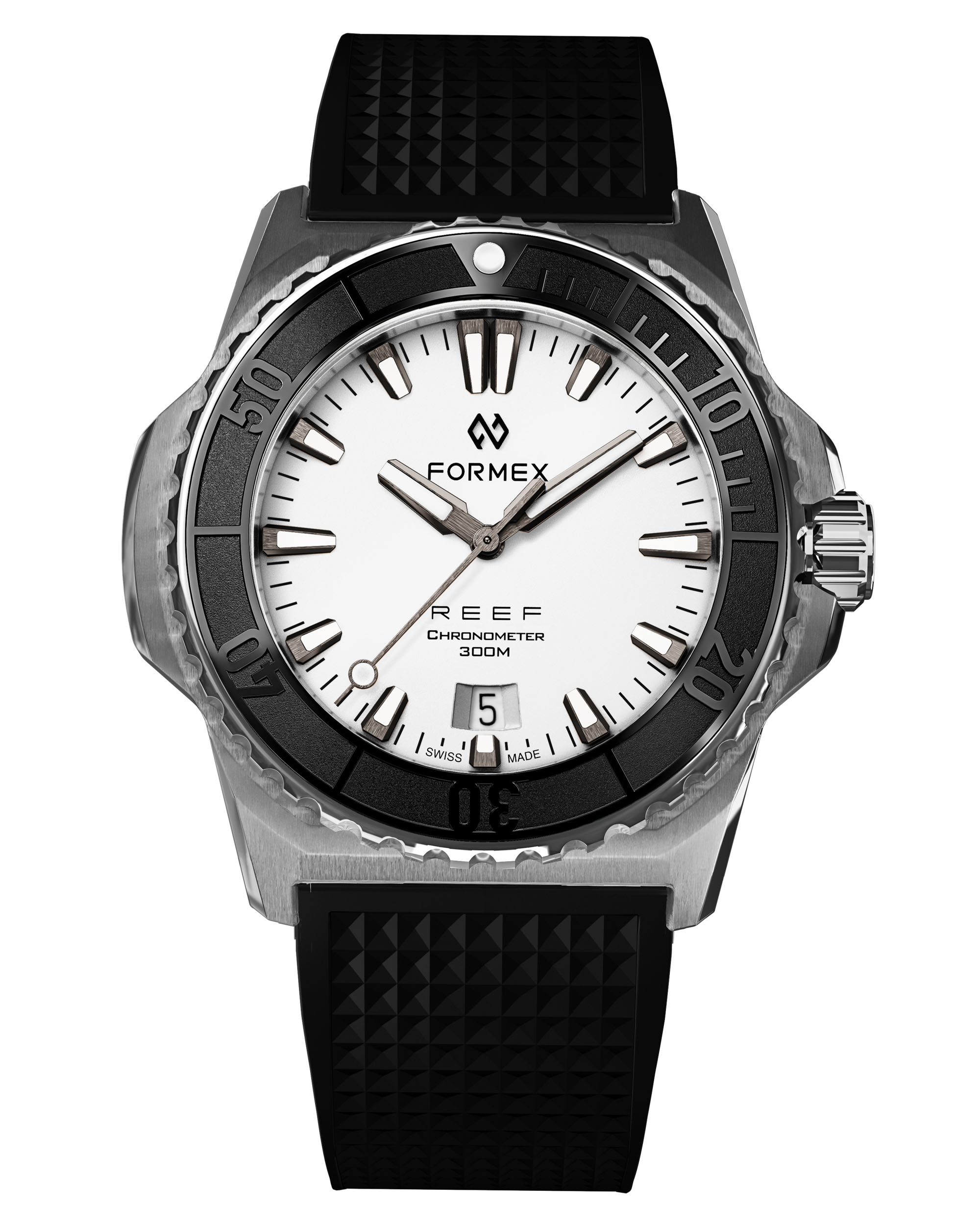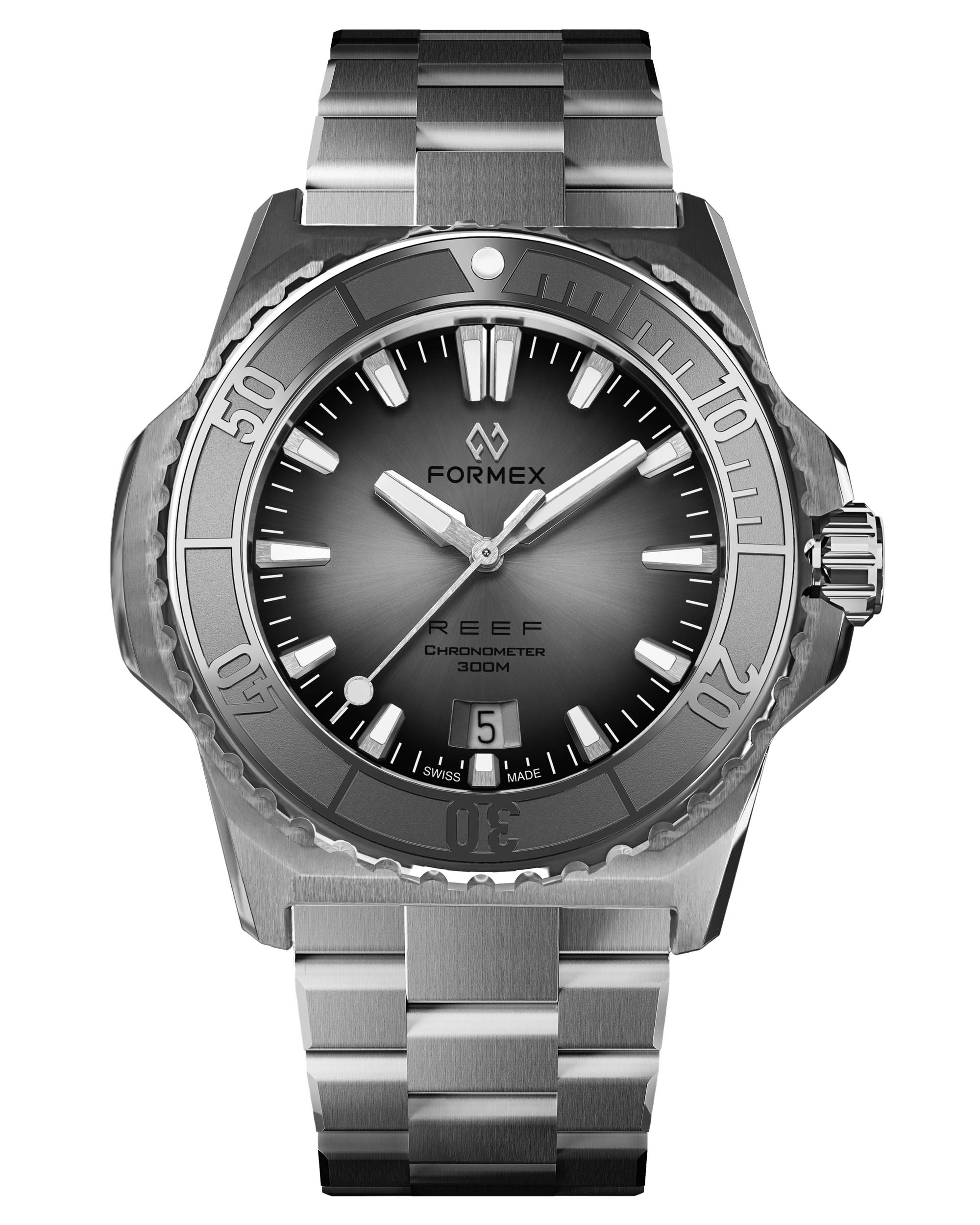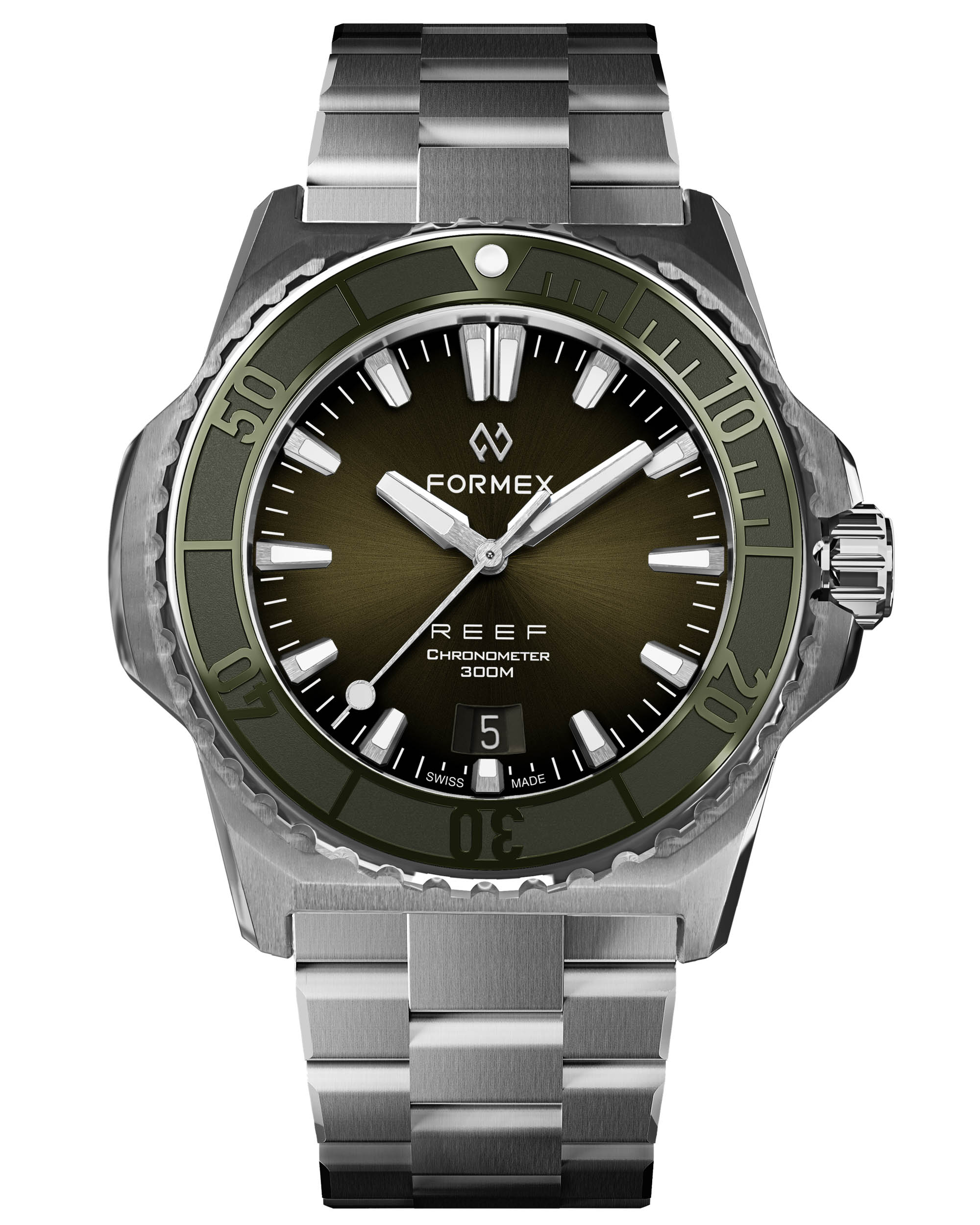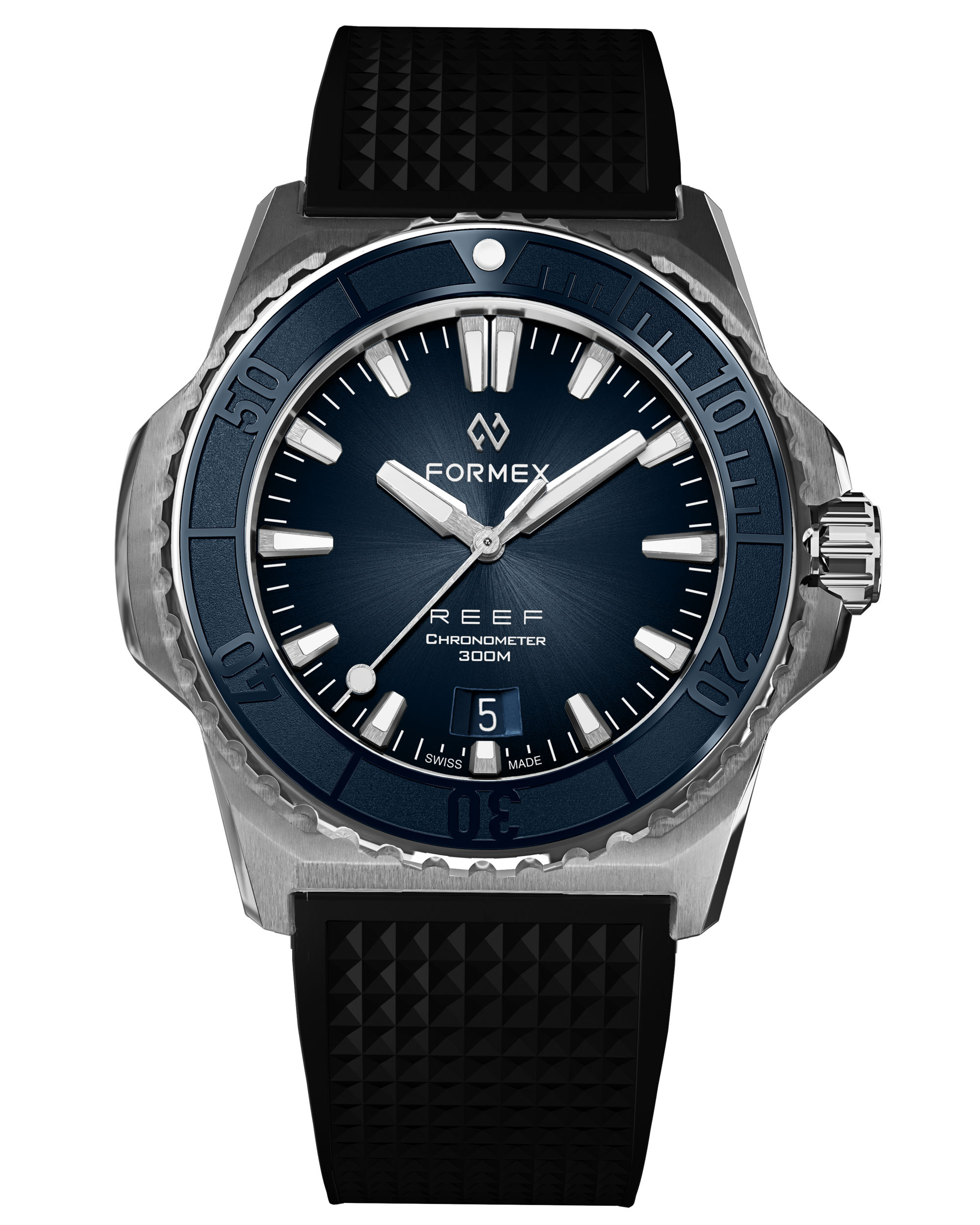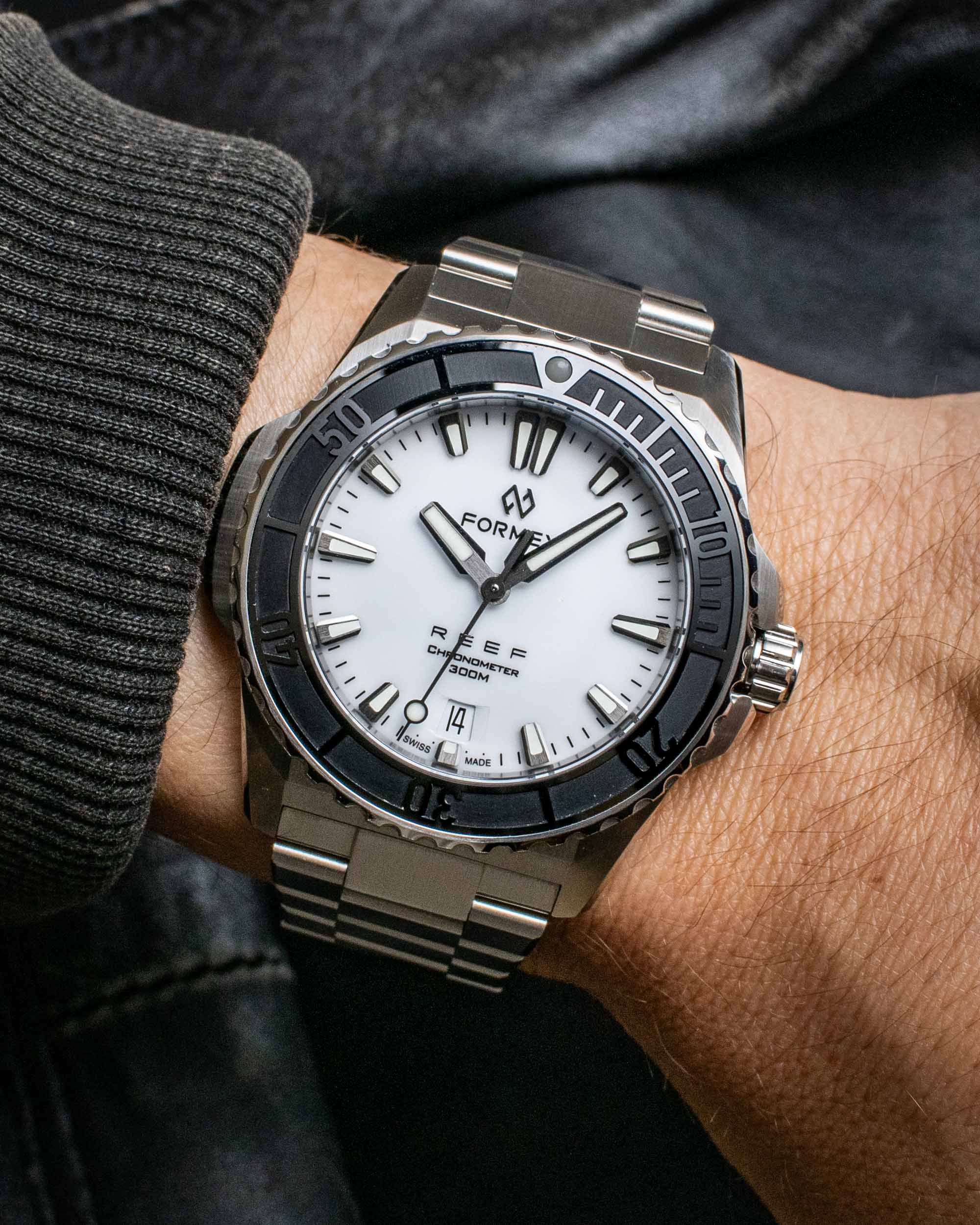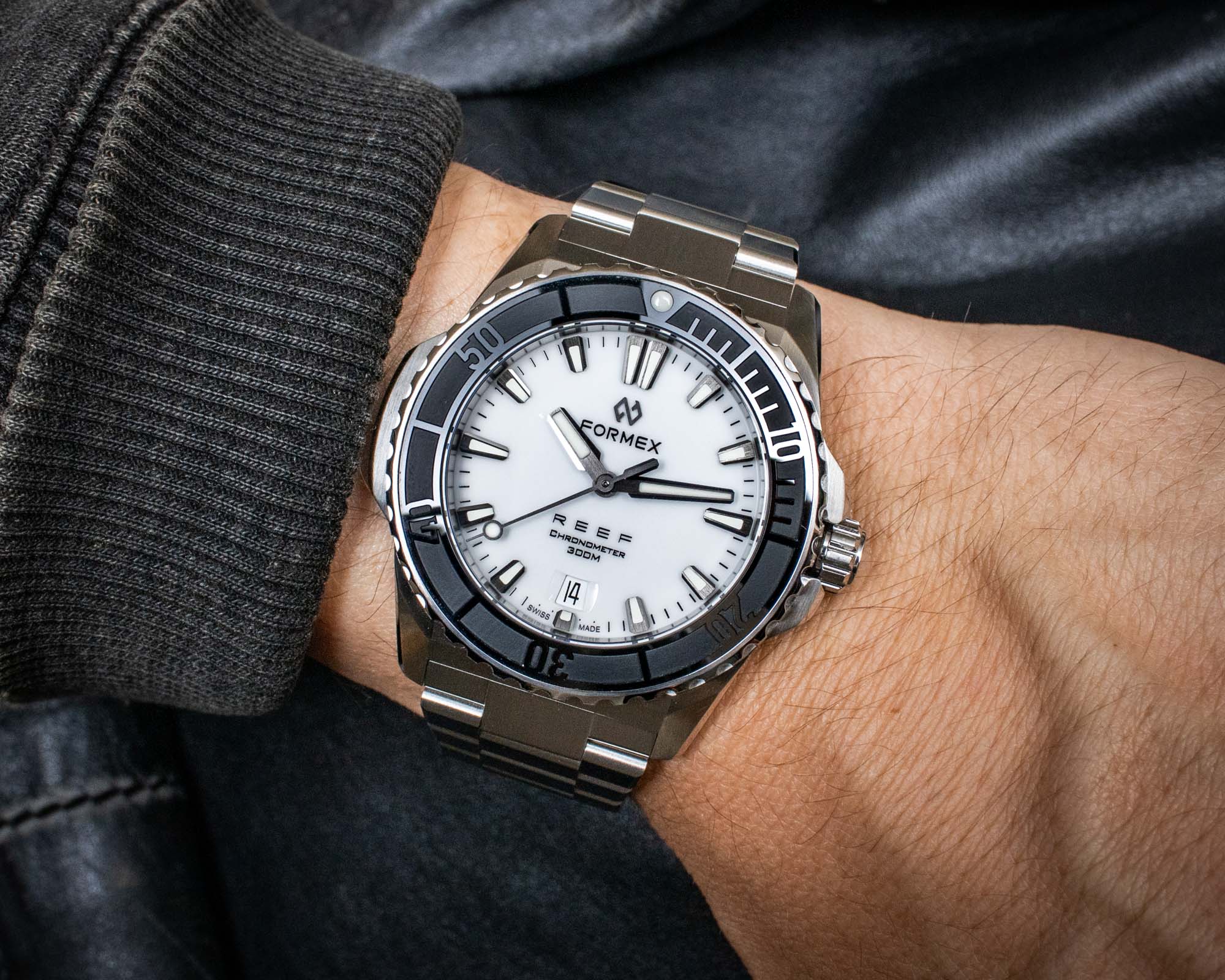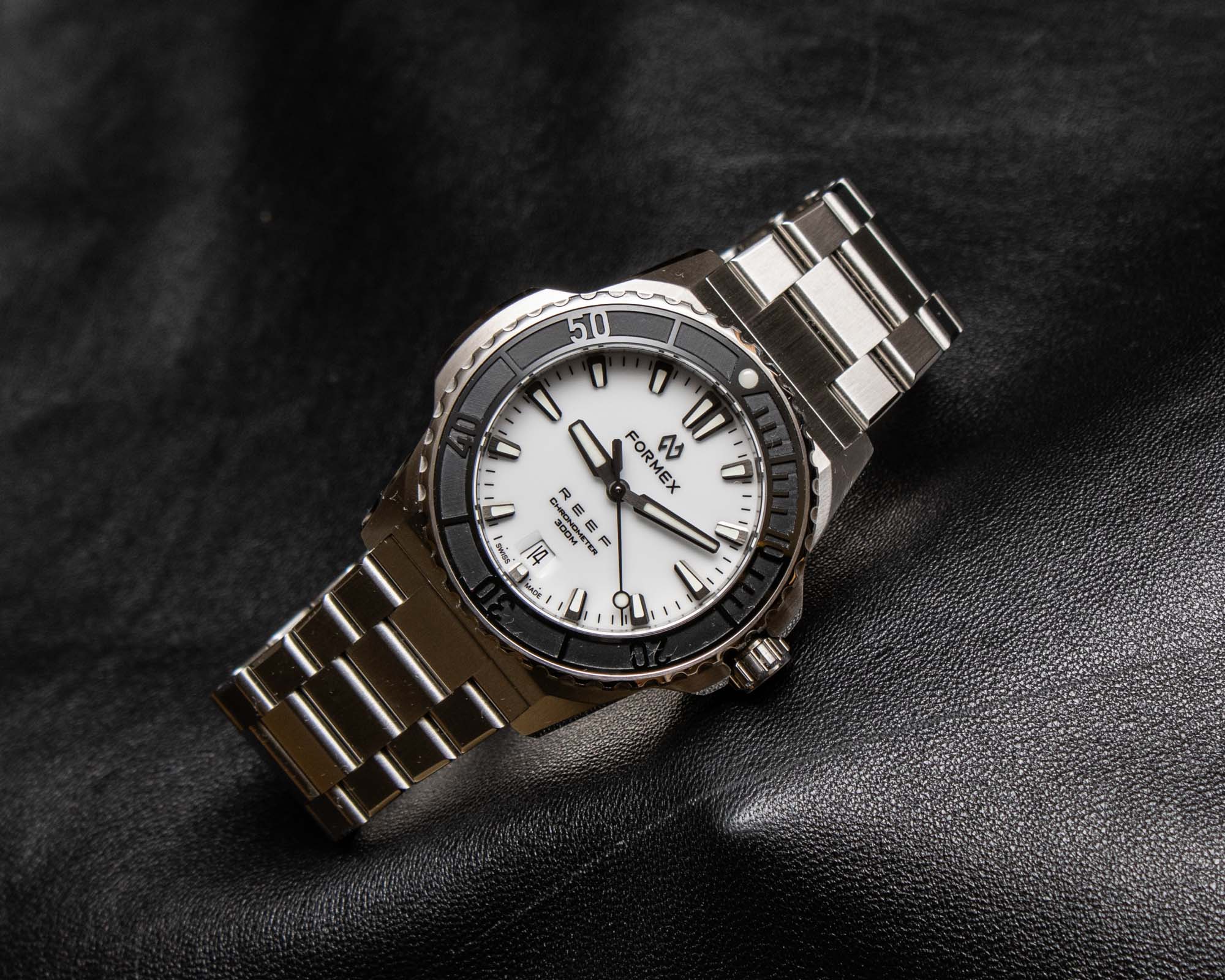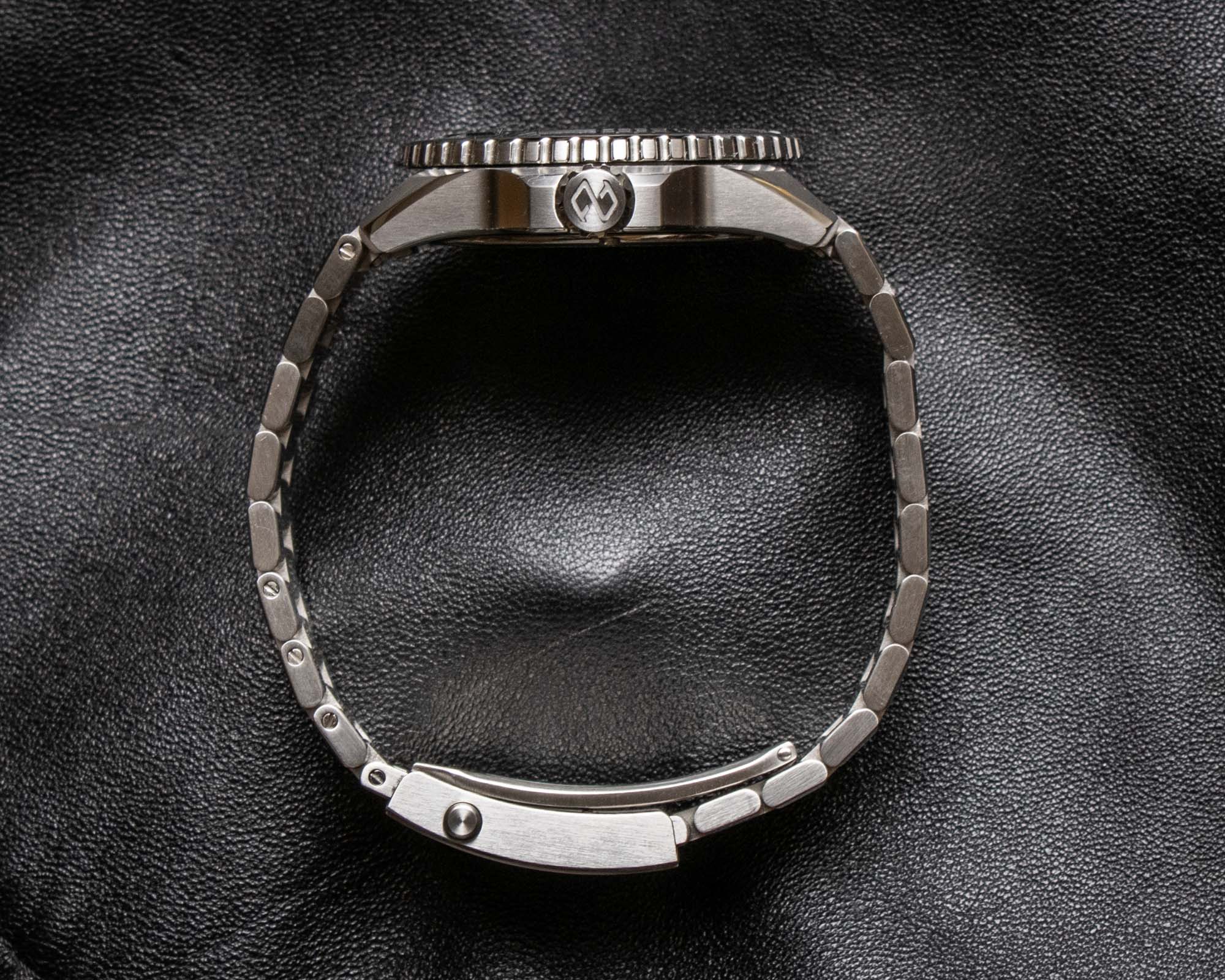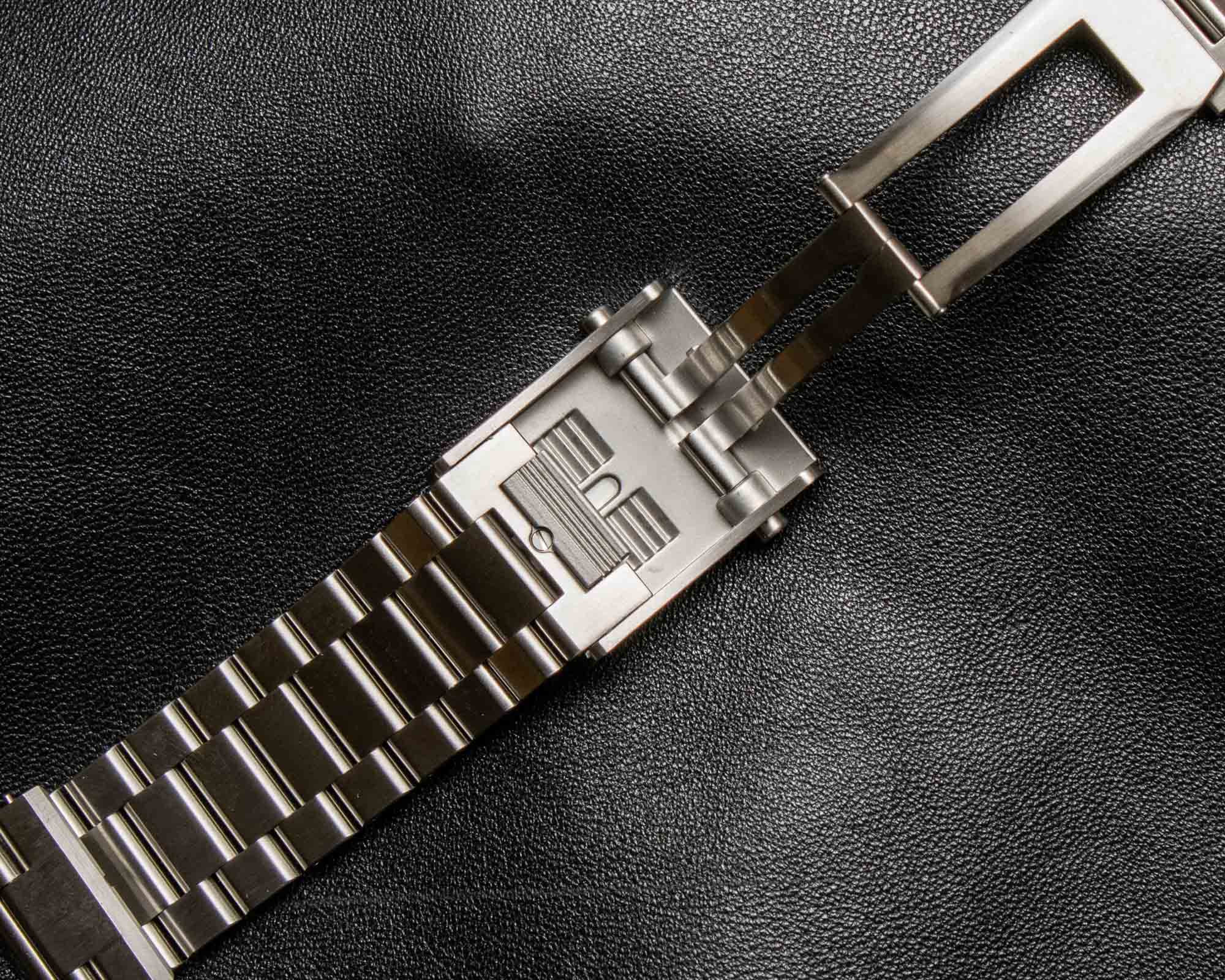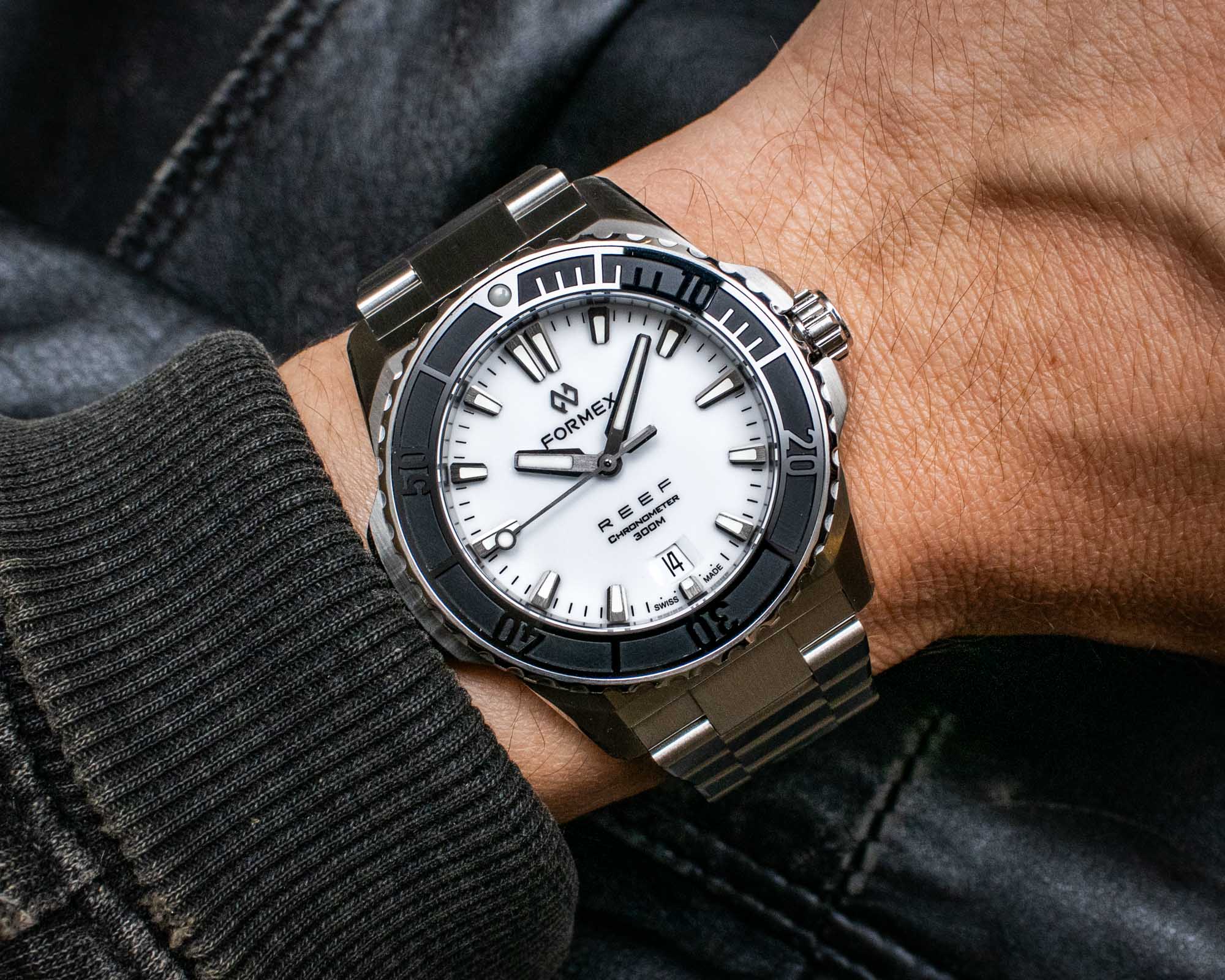
As someone who has fairly thin wrists, I was quite excited to hear that Formex was going to create a smaller version of its fan-favorite Reef dive watch. Between modern preferences trending towards increasingly compact case sizes and the popularity of dive watches as a whole, a smaller Reef simply makes a lot of sense. However, when I learned exactly what Formex was planning for the “Baby” Reef, I was somewhat skeptical about how it would actually come together as a complete package on the wrist. Rather than just scaling down the original 42mm Reef, one of the brand’s goals when creating the new Formex “Baby” Reef 39.5mm Automatic COSC 300M was to retain the same 22mm lug width as the full-size model so that owners could enjoy the vast ecosystem of straps and bracelets that are already available for the Reef collection. I often say that people base too much of their opinion on case dimensions, and the new “Baby” Reef is a perfect example of how on-paper specs only tell part of the complete story.
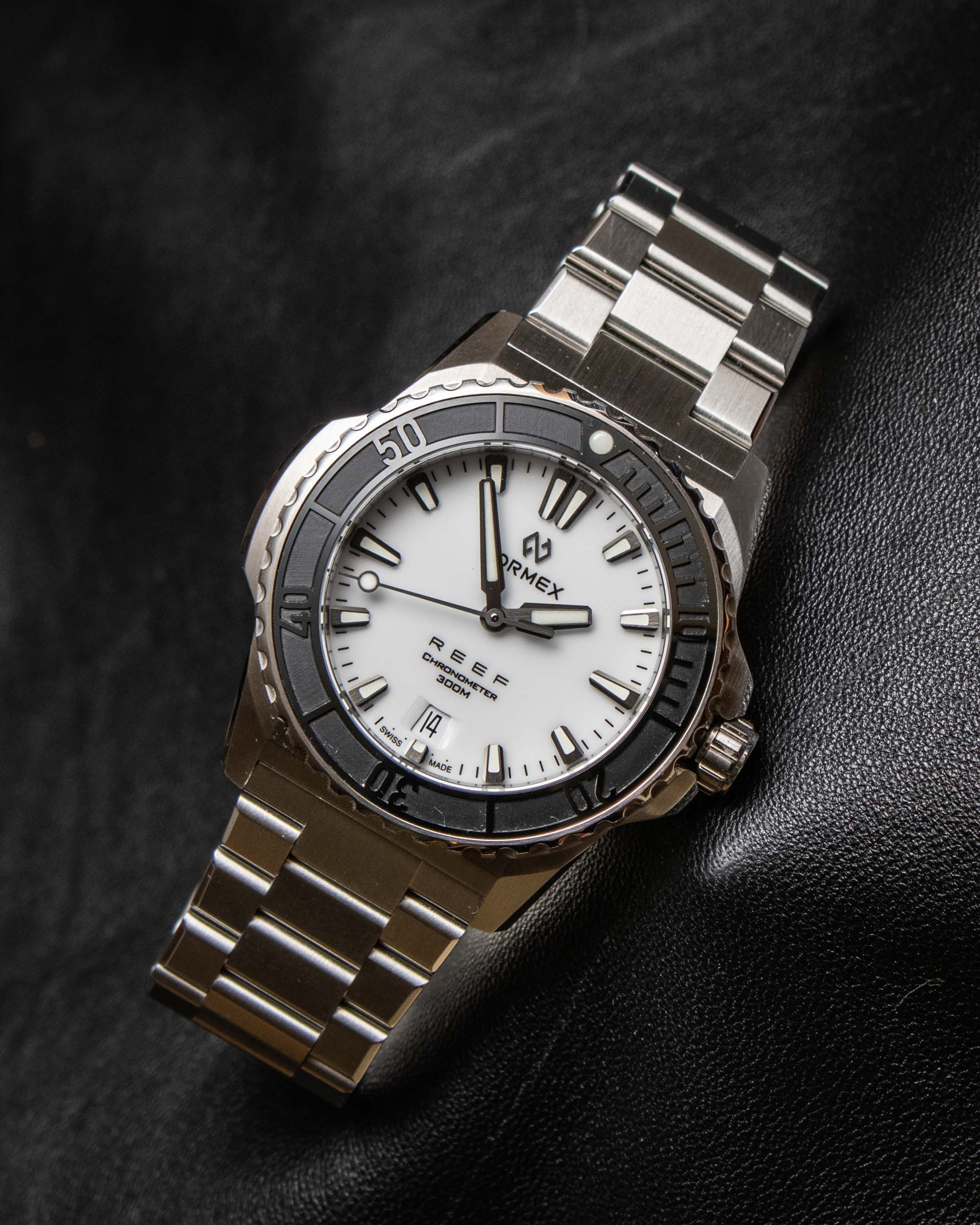
Creating a smaller version of a watch seems like a fairly straightforward task, although it is accompanied by far more nuances and obstacles than most people would expect. For example, unless the timepiece uses a bespoke caliber, decreasing the diameter of a watch is almost always easier than shrinking its thickness, as a large part of a watch’s height is determined by its internal movement. Similarly, proportionally shrinking a watch down in every dimension possible also doesn’t always yield satisfactory results, as the same details that promote a comfortable on-wrist experience for the full-size model can end up making the smaller version seem a bit too dainty, or result in components like bezels and crowns that are too small to easily operate. Successfully creating a smaller version of a watch requires revisiting all of its dimensions and proportions, which makes Formex’s goal of keeping the lug width the same on the new 39.5mm “Baby” Reef even more ambitious.
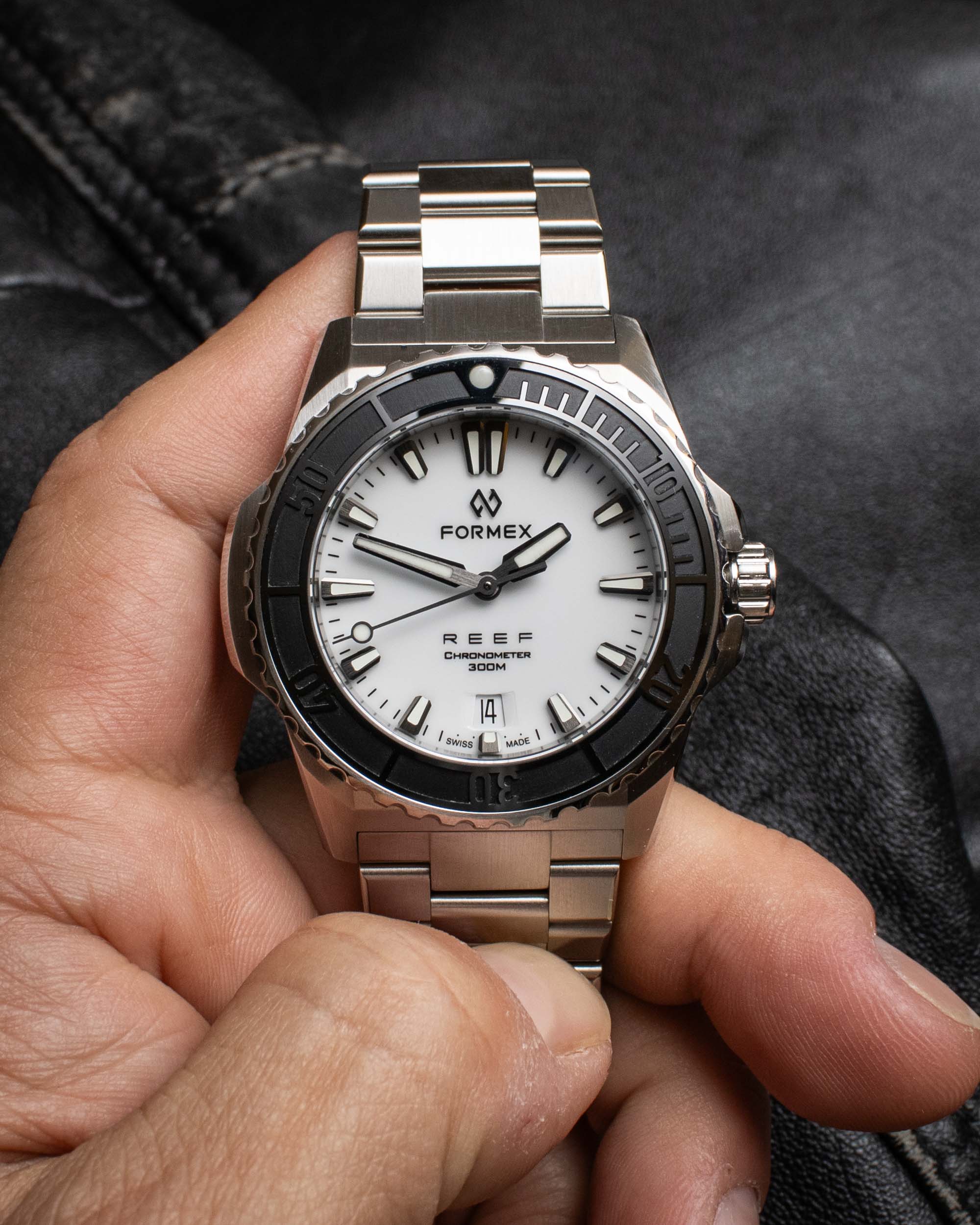
While the full-size Formex Reef diver has a case that measures 42mm in diameter by 47mm lug-to-lug with an overall thickness of 11.4mm, the new “Baby” Reef comes in at 39.5mm in diameter by 45.5mm lug-to-lug, and its height has also been slightly reduced down to 11mm. While the brushed and polished stainless steel case of the Formex “Baby” Reef is objectively thinner in terms of its on-paper specs, the altered proportions mean that it ends up feeling slightly taller on the wrist when compared to the wider case of the full-size model. As you would expect, a flat sapphire crystal (with anti-reflective treatment on the underside surface) sits above the dial, a solid screw-down caseback closes up the reverse side of the watch, and a signed screw-down crown sits between two angular guards at the 3 o’clock location to help guarantee the Reef collection’s 300 meters of water resistance. Similarly, surrounding the crystal is the Reef’s signature interchangeable bezel with a 60-minute insert in either stainless steel or ceramic, and like the full-size model, the bezel can be removed without the use of any tools and swapped out for alternate versions that Formex sells separately on its website.
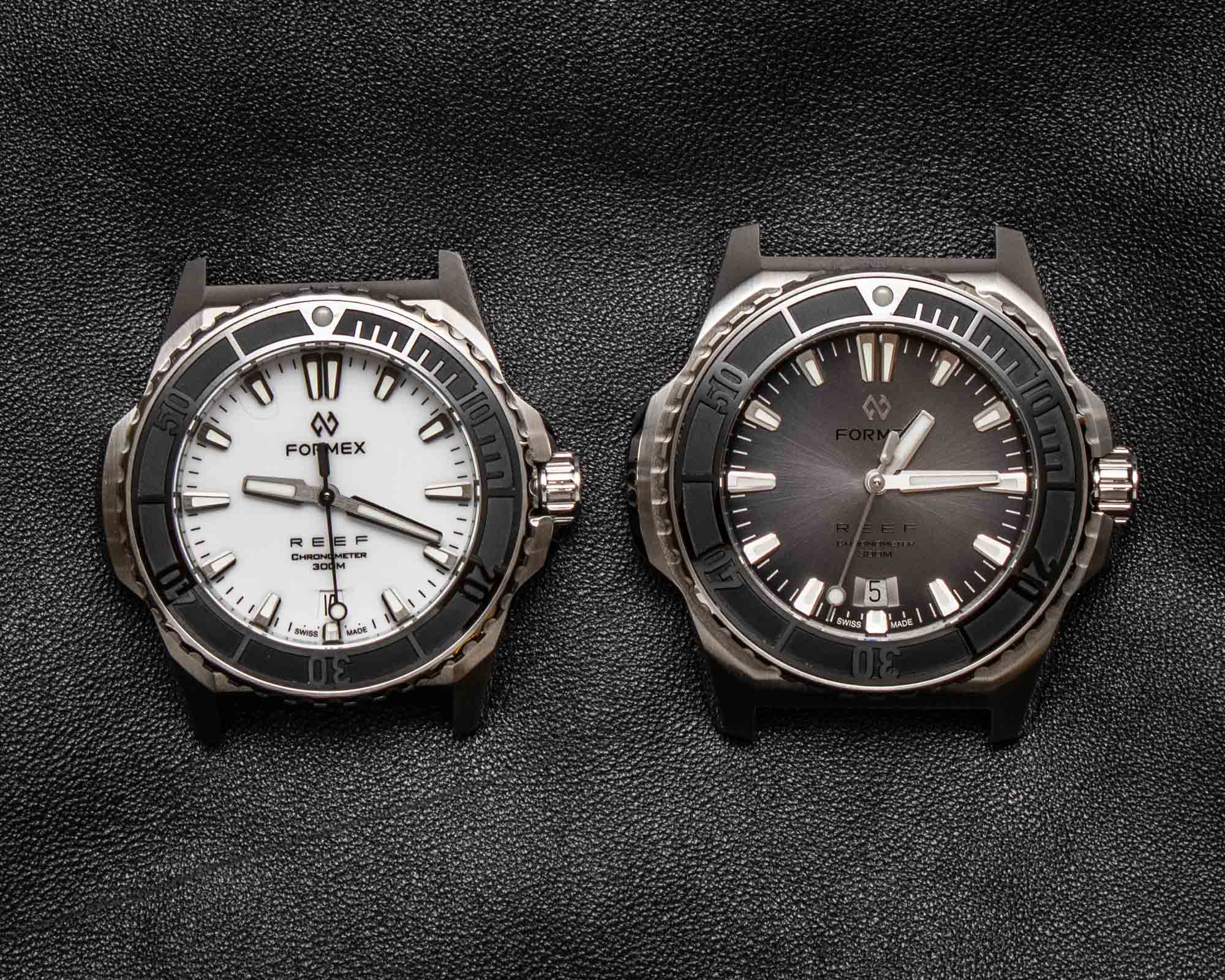
For the most part, the new Formex “Baby” Reef 39.5mm Automatic COSC 300M very much follows in the footsteps of the 42mm version, although to better correspond with its more compact case size, nearly all of the other components on the watch have also been made smaller. For example, the size of the crystal has been decreased by a millimeter, the bezel has been made slightly thinner, and even the winding crown has seen a size reduction compared to what can be found on the full-size Reef diver. Since the bezel ring itself is smaller on the new Formex “Baby” Reef, the interchangeable bezels will not be cross-compatible between the two different case sizes in the same way that bezels can be swapped back and forth between the Formex Reef GMT and the 42mm Reef dive watch. All of that being said, since the new “Baby” Reef is essentially a smaller version of the original, keeping the same 22mm lug width stands out as a particularly bold decision, although it does allow the watch to use the same straps and bracelets that are available for the rest of the Reef collection.
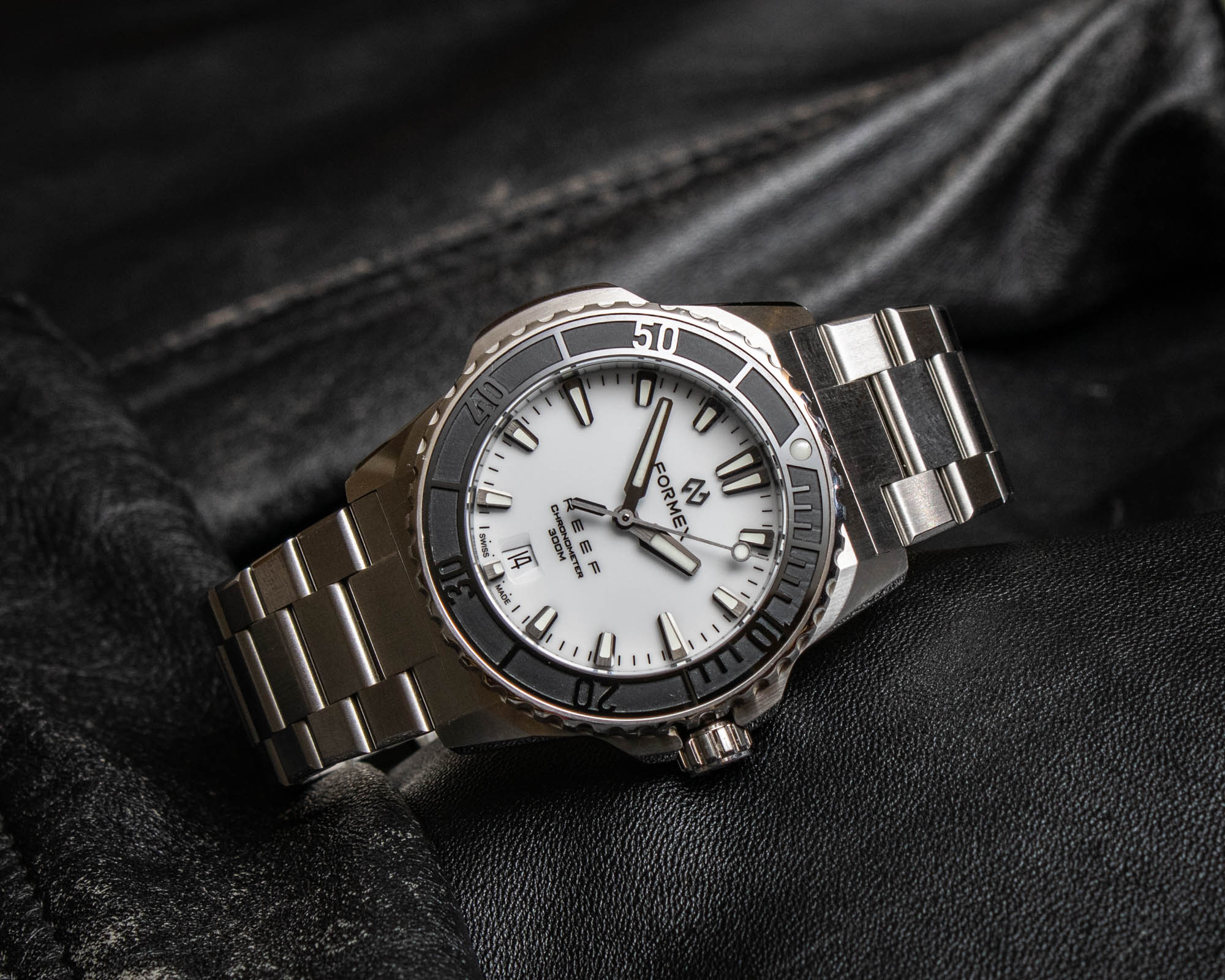
If I am being completely honest, I thought that the 22mm lugs would feel incredibly out of proportion on the new Formex “Baby” Reef 39.5mm Automatic COSC 300M. However, after getting a chance to experience the watch in the metal, the case-to-lug radio actually works out quite a bit better than I had initially expected. While the case of the “Baby” Reef measures 39.5mm at its thinnest point, the crown guards and the protrusion on the 9 o’clock side bring the actual width of the case up to approximately 43.5mm, and this helps to prevent it from feeling like a cuff, where the strap or bracelet is nearly the same width as the watch itself. Personally, I still feel that 20mm lugs would have been more proportionally sized for the case of the “Baby” Reef, although 22mm lugs on a 39.5mm case have the potential to be an absolute train-wreck on the wrist, and Formex has done a very good job of tweaking the proportions enough to mitigate what might otherwise be an incredibly awkward wearing experience.
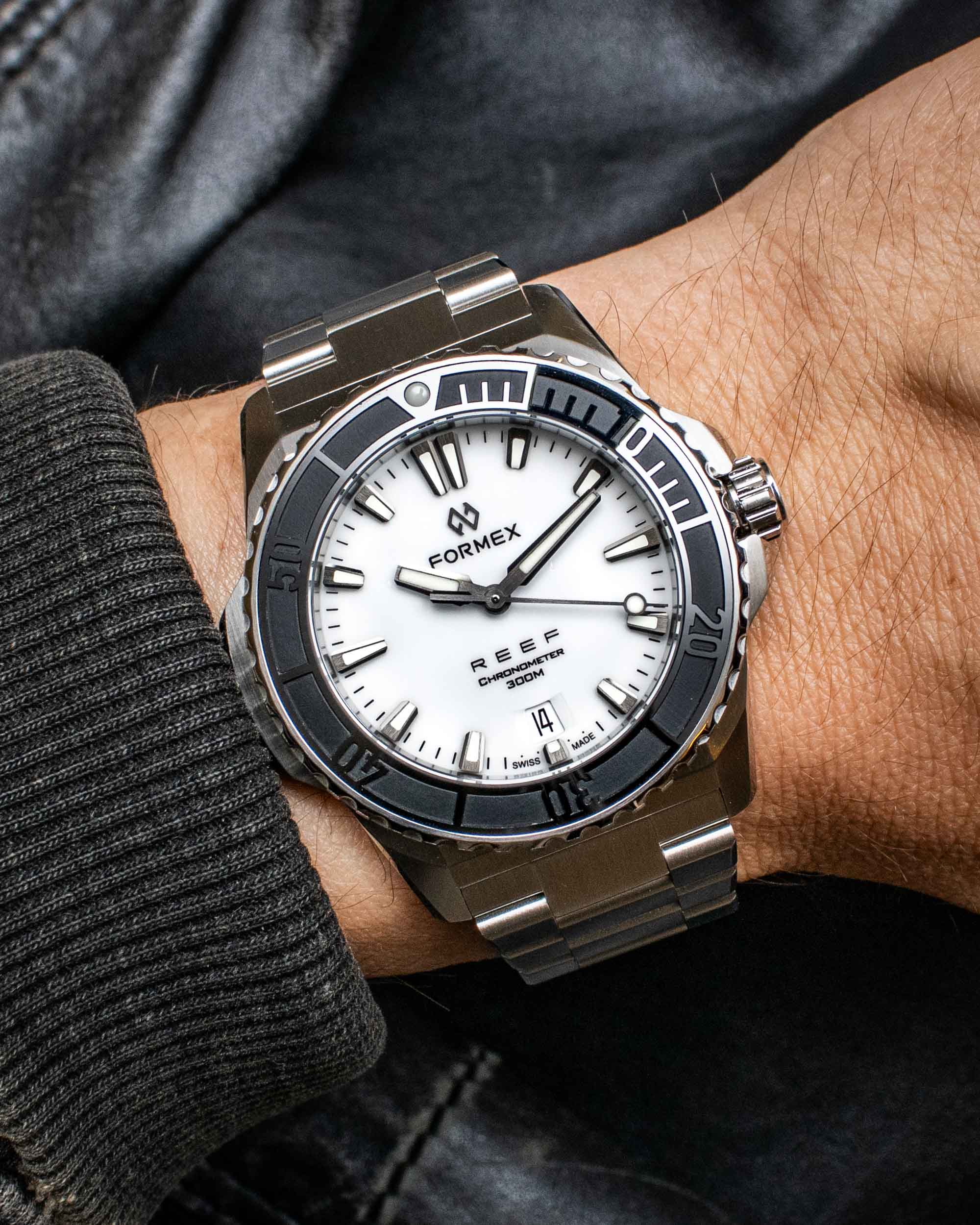
Aside from being smaller, one other key difference between the new Formex “Baby” Reef 39.5mm Automatic COSC 300M and its full-size counterpart is the amount that the bezel ring hangs past the edges of its case on the 6 o‘clock and 12 o‘clock sides. A small amount of overhang is also present on the full-size model, as this is where you grip the interchangeable bezel when you want to remove it from the case; however, the amount that the bezel extends past the edge is noticeably more pronounced on the new “Baby” Reef. While the additional overhang of the bezel makes it easier to remove (potentially even too easy for some preferences), it also results in a slightly less cohesive overall aesthetic compared to what can be observed on the full-size 42mm model. One other minor detail to note about the specific example of the “Baby” Reef that was photographed for this article is that it is a pre-production version with a prototype case tube that makes its winding crown stick out slightly further from the case. While this is a very minor detail, I still think it’s worth mentioning, and rest assured that the crown will sit properly against the case on the final production models.
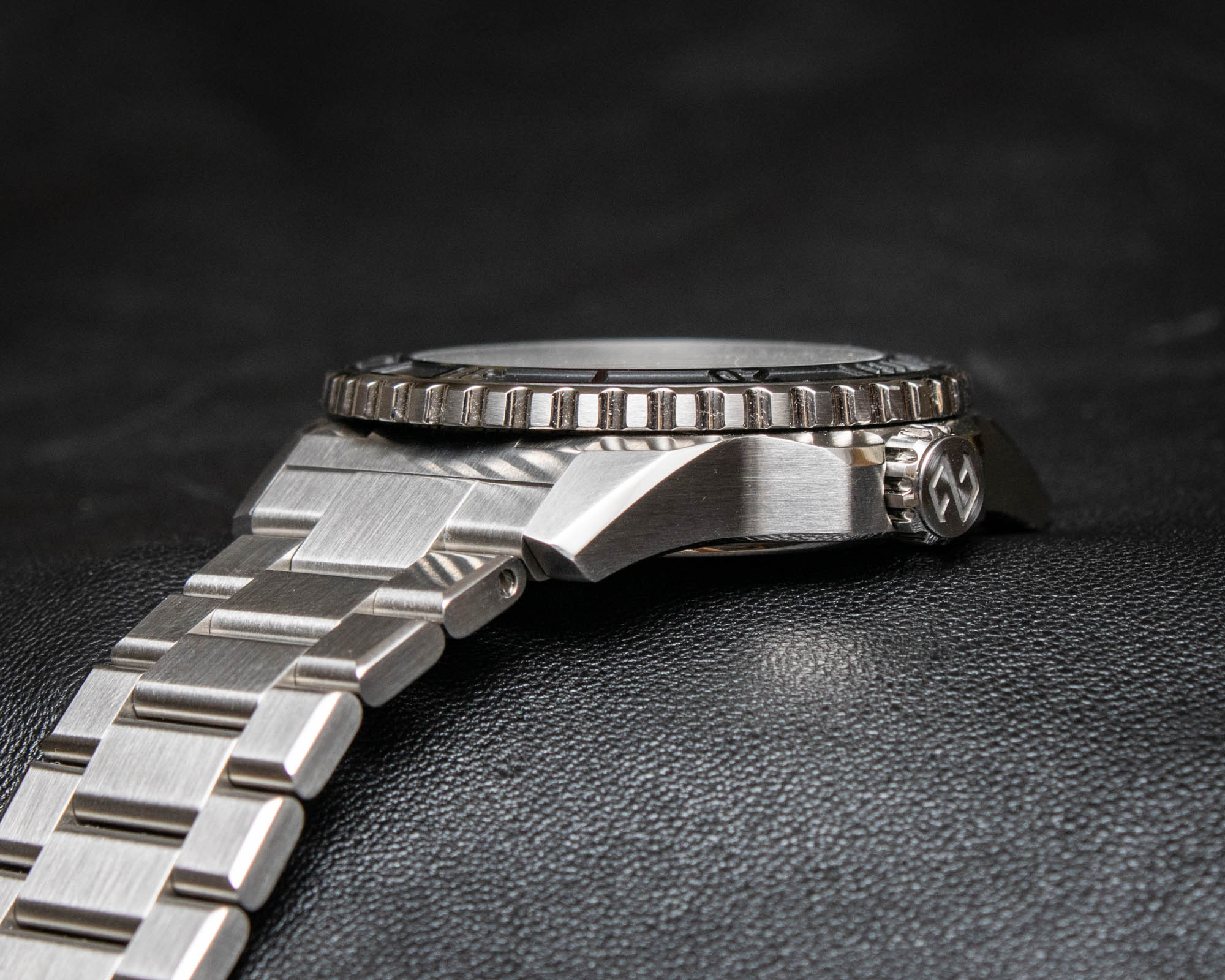
Like the rest of the watch (aside from its lug width), the dial and hands fitted to the new Formex “Baby” Reef 39.5mm Automatic COSC 300M are very much smaller versions of what can be found on the full-size Reef diver, and White, Blue, Green, and Silver are the dial colors available for the new reduced-size model. The hands and applied triangular hour markers have been made slightly shorter to correspond with the smaller size of the dial, while the beveled date window sits in its usual place at the 6 o’clock location. Similarly, the finishing on the hands and markers is the same as what can be found on the full-size model, with vertical brushed top surfaces and mirror-polished bevels. As you would expect, all of the hands and indexes (plus the zero marker on the bezel insert) are finished with Super-LumiNova BGW9 to provide the “Baby” Reef with the same bright blue-glowing display that exists on the full-size version of the watch.
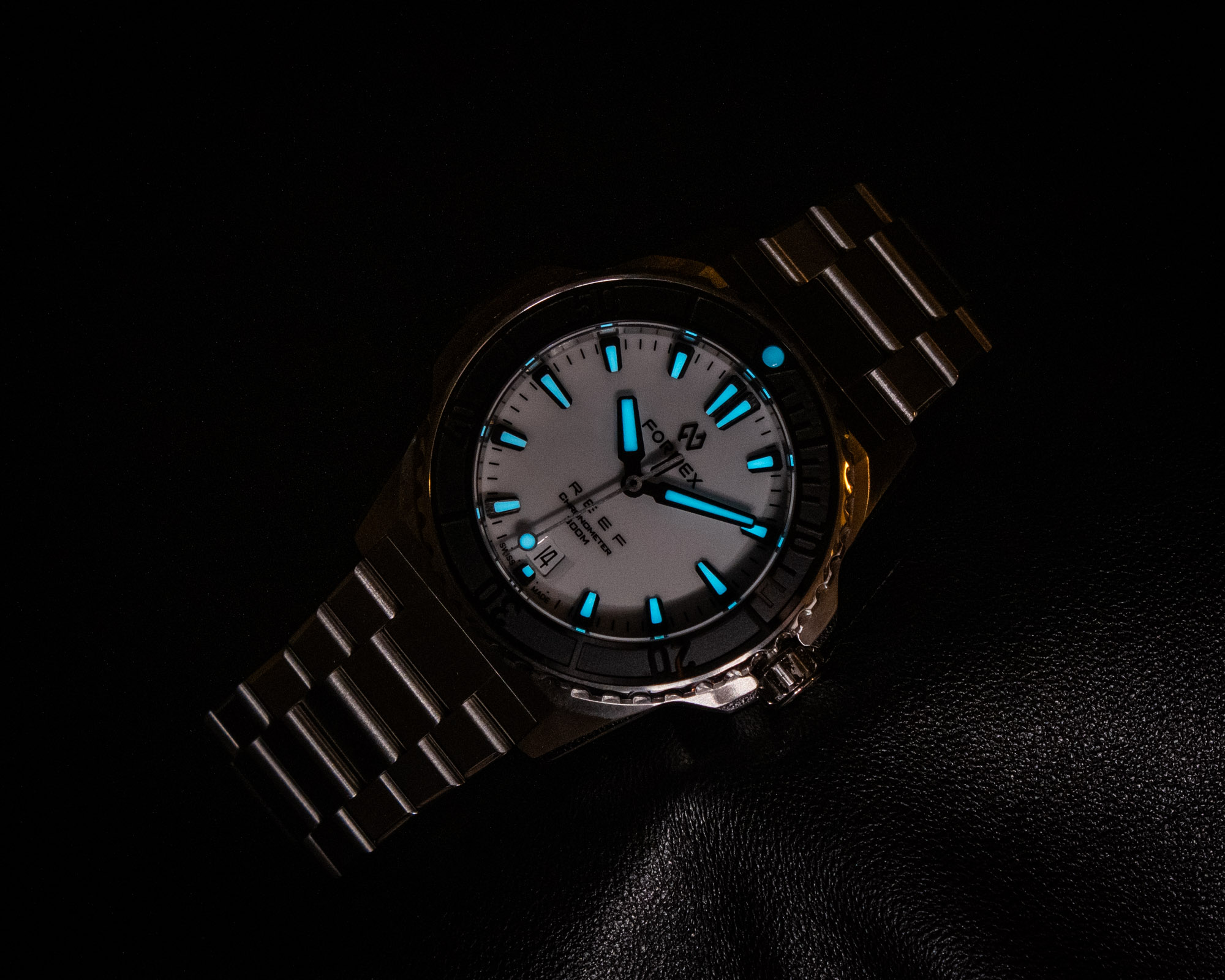
Despite its smaller case size, the new 39.5mm Formex “Baby” Reef is powered by the same Sellita SW300-1 automatic movement that the brand uses inside the larger 42mm models, which means that performance will be identical between the two different sizes of the Reef. Running at a frequency of 28,800vph (4 Hz) with a power reserve of approximately 56 hours, the Sellita SW300-1 is very much a familiar design, although Formex uses the Chronometer Grade version of this popular self-winding Swiss movement, which represents the most premium level that is available. Along with benefiting from more elaborate finishing compared to the basic versions of this caliber, the Chronometer Grade Sellita SW300-1 also offers COSC-certified timekeeping performance, guaranteeing that the new “Baby” Reef will run within the stringent standards of -4/+6 seconds per day, like the rest of the models from the greater Formex Reef collection.
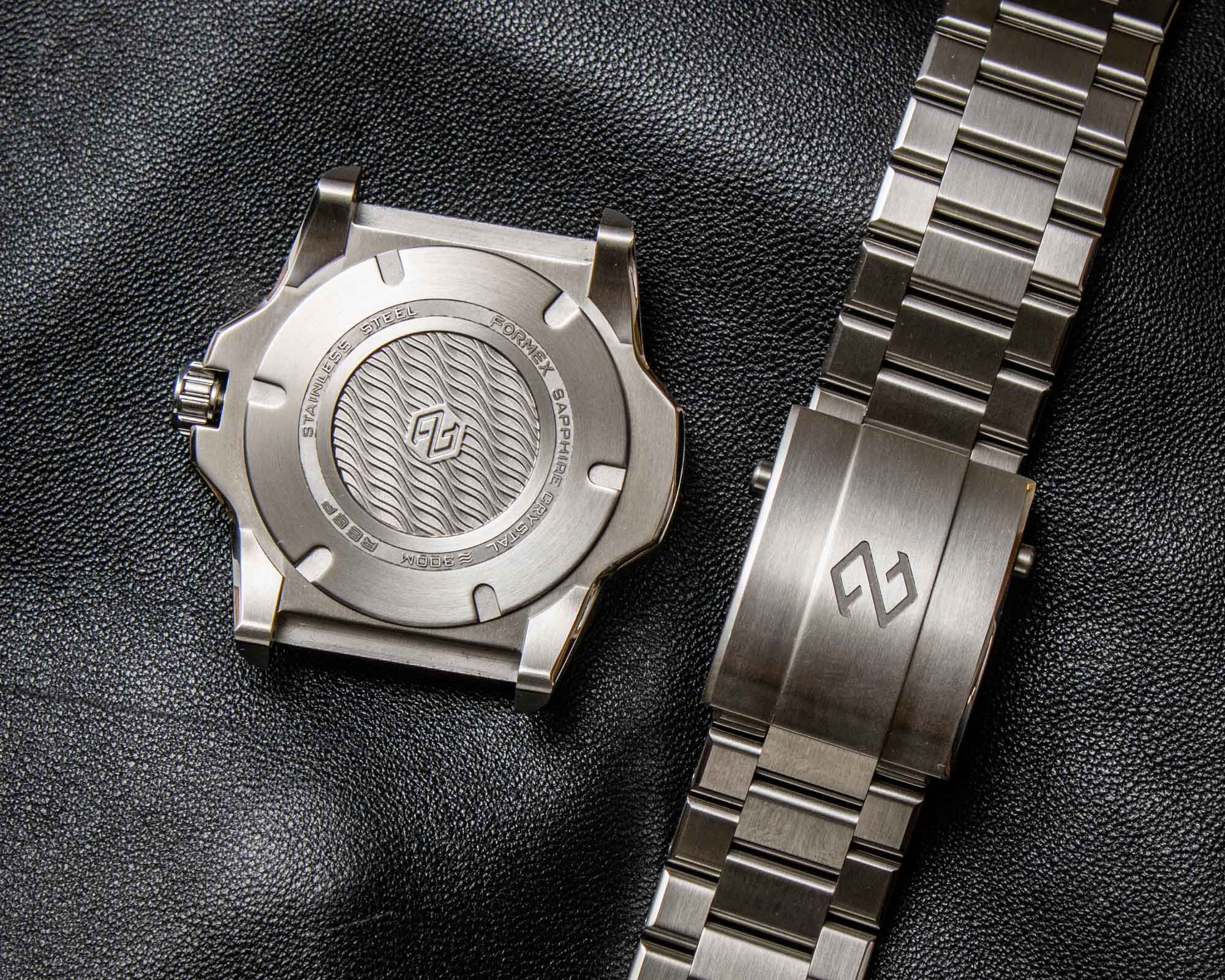
Since the new Formex “Baby” Reef 39.5mm Automatic COSC 300M features the same 22mm lugs as the rest of the Reef models, all of the bracelets and straps are cross-compatible for the two case sizes, and Formex offers the smaller 39.5mm Reef with all of the same options that exist for its full-size 42mm dive watch. Alongside a black Nylon NATO strap are two-piece straps in either black rubber or Italian calf leather (black, brown, or crocodile print), and both options are fitted with Formex’s carbon composite deployant clasp that includes a patented 7mm fine-adjustment extension system. Alternatively, buyers can opt for the same flat three-link stainless steel bracelet that is also fitted to the full-size Reef diver, and while the bracelet itself is objectively quite good and would be my preferred configuration for the 42mm version of the Reef, I would opt for the rubber strap on the smaller 39.5mm “Baby” Reef, simply due to the relatively minimal amount of taper offered by the bracelet.
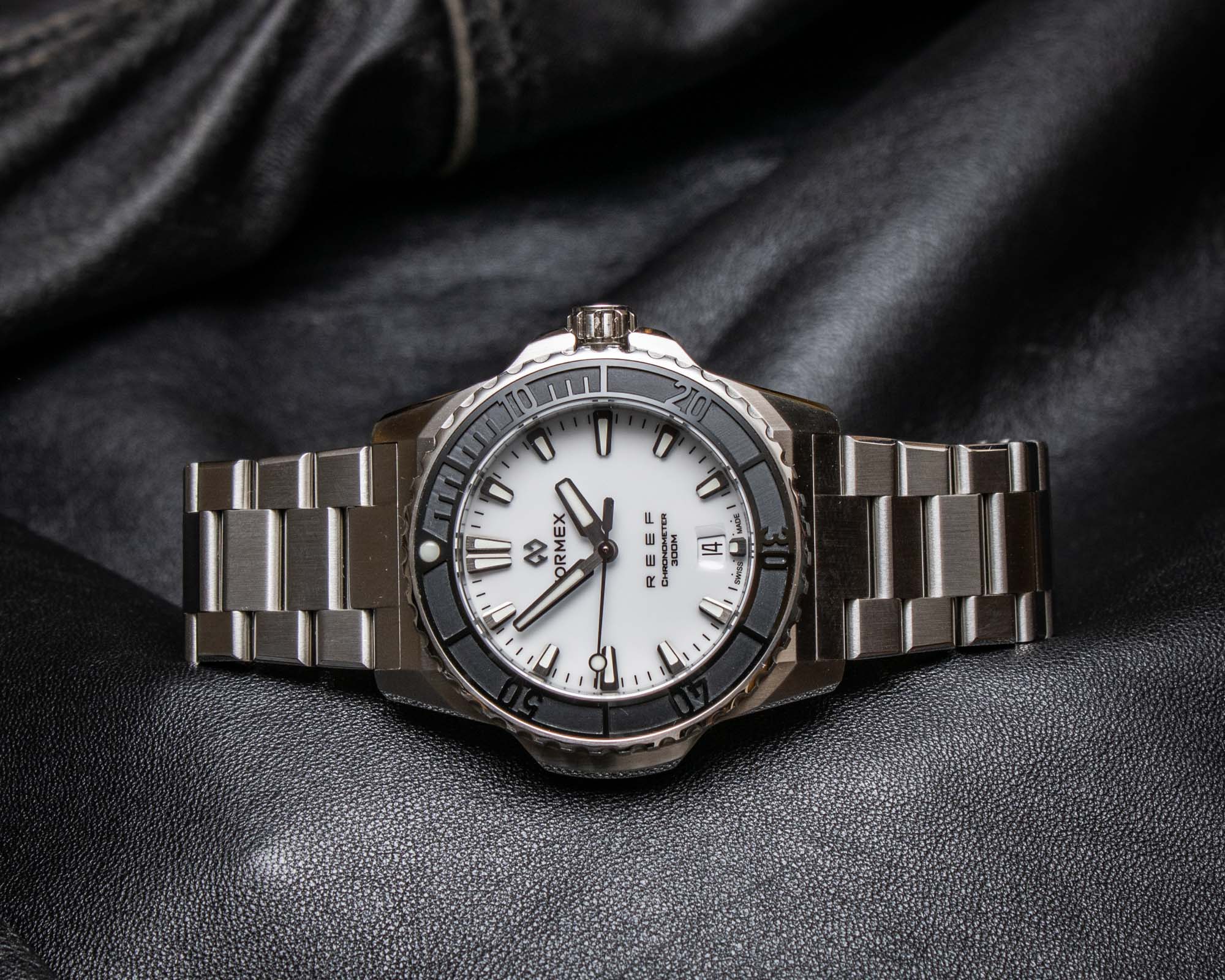
With completely solid components, single-sided screws for the removable links, integrated push-button connections at the lugs, and a patented 10mm incremental extension system built into its clap, the Formex Reef bracelet ultimately leaves very little to be desired. However, since it only tapers from 22mm at the lugs down to 20mm at the bottom of the wrist, the lower half of the bracelet ends up feeling just a bit too wide when paired with the relatively compact case profile of the “Baby” Reef. The wide stance of the lugs will be partially mitigated by a strap with a more pronounced taper, and since I’m already a fan of Formex’ carbon composite deployant clasp, I would personally opt for the rubber strap on the “Baby” Reef, and this would be one of the rare instances where I wouldn’t choose the bracelet configuration for one of Formex’s watches. That said, the bracelet itself is very well made, and other than wishing that it offered a more dramatic taper, there is actually very little I would change about its overall design and construction.
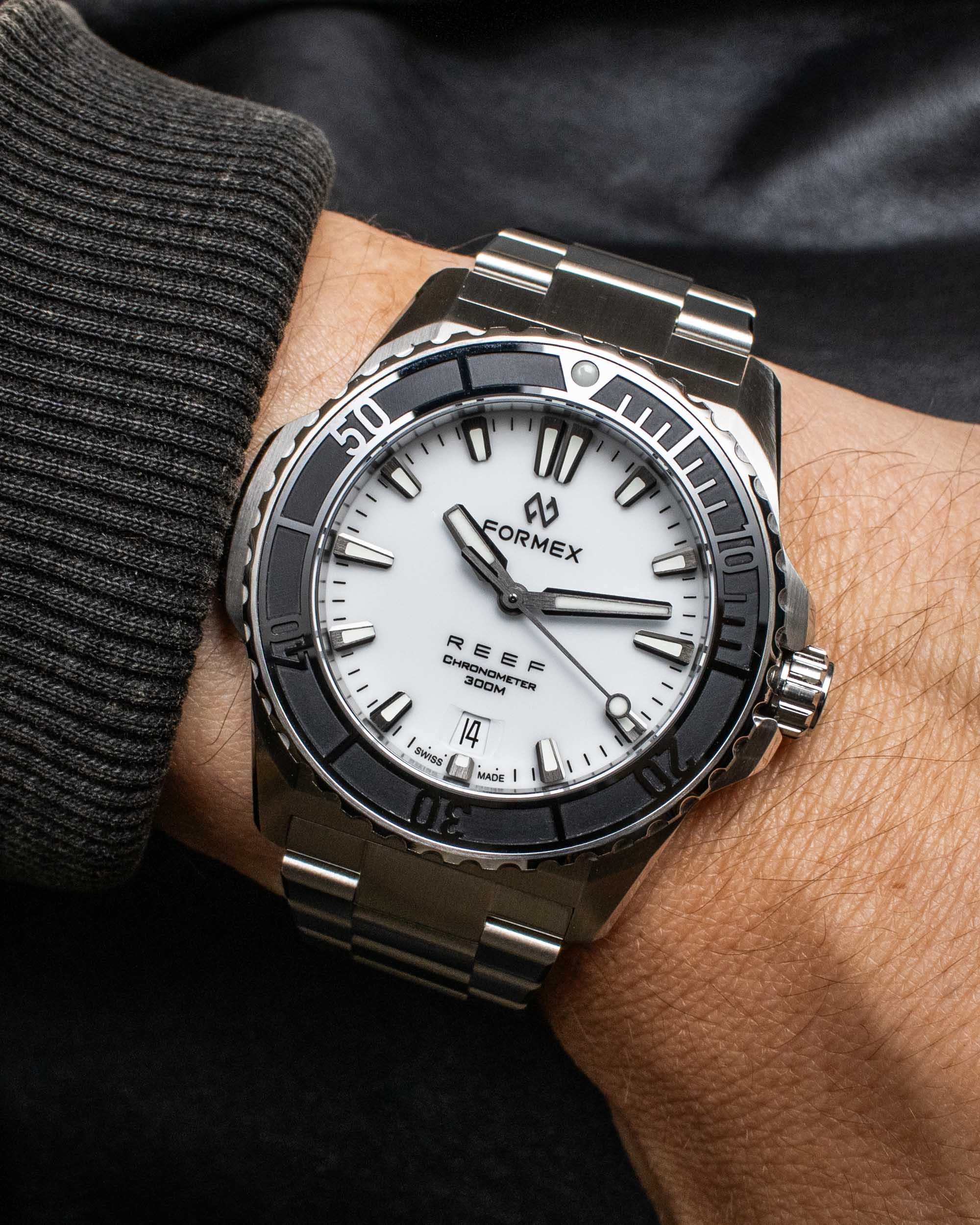
Since the new Formex “Baby” Reef 39.5mm Automatic COSC 300M is essentially a smaller version of the 42mm Reef diver, it costs the exact same and is accompanied by an official retail price of $1,650 USD on a NATO, $1,800 USD for the leather strap version, $1,830 USD on a rubber strap, or $1,960 USD should buyers opt for the stainless steel bracelet. Similarly, the additional interchangeable bezels for the “Baby” Reef also cost the same as their larger siblings, and they are each priced at $170 USD. While I personally feel that the original 42mm version is the more successful expression of this particular design, the smaller 39.5mm “Baby” Reef ultimately exceeds my expectations when it comes to creating a significantly smaller model that is still able to use the same straps and bracelets. Given that Formex originally designed the Reef as a 42mm watch, the full-size version would still be my top recommendation between the two models. However, the new “Baby” Reef succeeds at offering identical features and much of the same appearance in a noticeably more compact overall package. For more information on the Formex “Baby” Reef 39.5mm Automatic COSC 300M, please visit the brand’s website.

